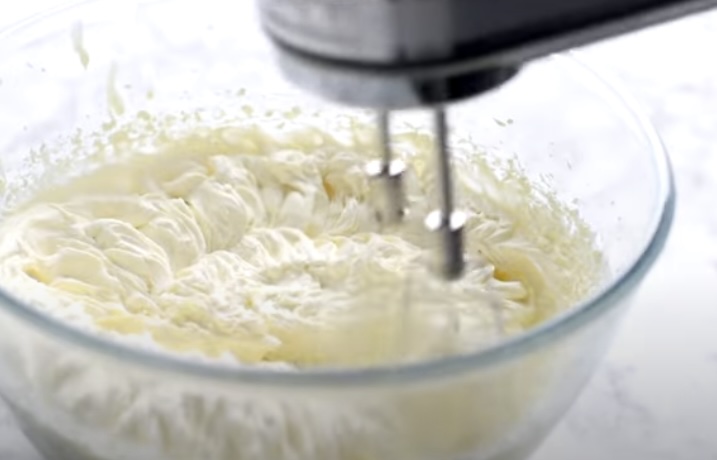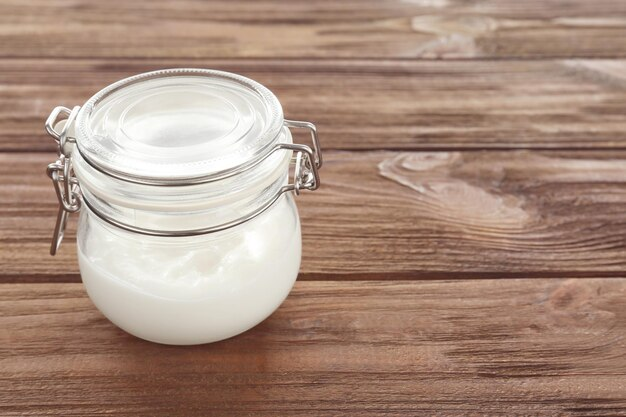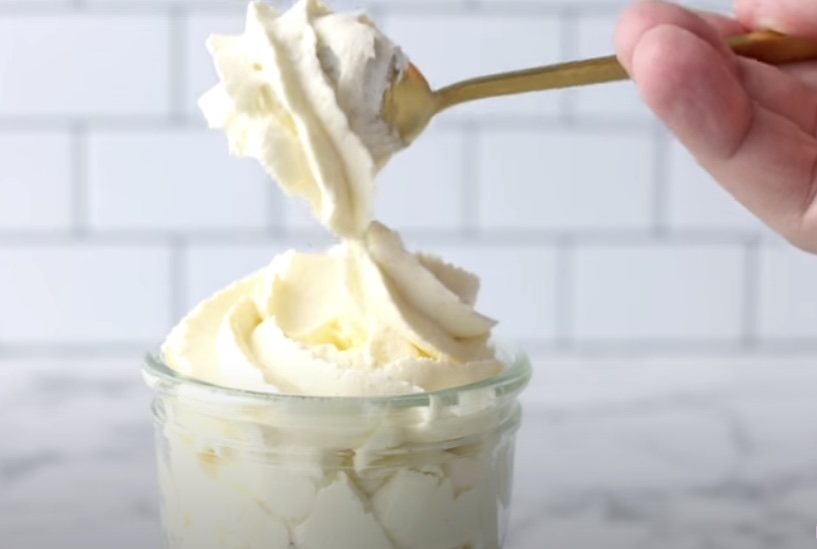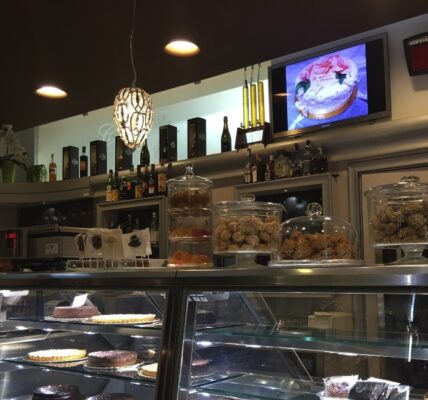Chantilly cream, the sweet and creamy topping loved by dessert enthusiasts everywhere, is a culinary treasure that brings joy to kitchens across the globe. With its versatile flavor profile and rich historical background, this lightly sweetened whipped cream has become an essential ingredient in many delicious desserts. In this article we’ll delve into all things Chantilly cream; from its origins to how it’s made and used in various confections.
The Origin of Chantilly Cream
The scrumptious and decadent dessert topping known as Chantilly cream has a long lineage tracing back to 17th century France. It owes its name to the esteemed Château de Chantilly, with which it is deeply intertwined in terms of origin. Join us as we explore the captivating tale that lies behind this enjoyable delicacy.
What is Chantilly Cream?
Crème Chantilly, also known as Chantilly cream in a luxurious form of whipped cream that has become a dessert classic. It boasts and subtle sweetness with an airy and delicate texture mainly comprised of heavy cream, sugar, and sometimes vanilla extract for added flavor. This delectable topping is the perfect complement to cakes, pies, fruits or pastries just to name few delightful pairings.
Historical Background
Chantilly cream’s origins are closely linked to France’s culinary customs, especially during the 17th century. The luxurious Château de Chantilly situated in northern Picardy had a significant role in developing and spreading its fame around that era.
The grand edifice of Château de Chantilly, a splendid fortress from the Renaissance period, gained fame for its extravagant soirées and indulgent banquets held by the noble upper class. It was in this lavish residence that the scrumptious delicacy of Chantilly cream first emerged as a culinary sensation thanks to the exceptional skills of French chefs during those times.
François Vatel, an acclaimed French chef who acted as the master of ceremonies at Château de Chantilly in the 17th century, is recognized for his significant role in promoting the widespread popularity of Chantilly cream. By leveraging his culinary expertise and pioneering techniques, he catapulted this delicacy into being a highly regarded favorite among nobility throughout France.
Key Characteristics of Chantilly Cream
In order to gain a deeper comprehension of the appeal of Chantilly cream, let us scrutinize its primary attributes:
Texture
The exceptional texture of Chantilly cream is a result of its light and airy consistency, achieved through the precise process of whipping heavy cream to soft peaks. Throughout this methodical technique, air becomes infused into the mixture resulting in a rich and velvety-smooth texture that positively dissolves on your palate. This lavish mouthfeel offers an indulgent contrast against heavier dessert elements creating a truly luxurious experience.
| Texture | Description |
| Light | Chantilly cream has a light and airy consistency. |
| Velvety | It possesses a velvety-smooth texture. |
| Melt-in-the-mouth | The cream effortlessly melts in the mouth, providing a delightful sensation. |
Sweetness
Chantilly cream differs from conventional whipped cream in that it is softly sweetened with powdered sugar, imparting a delicate flavor profile to the creamy delight. The gentle sweetness adds an extra oomph to its taste without becoming too overpowering for one’s palate. By elegantly blending with diverse flavors of desserts, Chantilly cream finely enhances their overall appeal and allows them to steal the show perfectly well, thanks mainly due to its subtle yet stunningly complementary effect!
| Sweetness | Description |
| Gently Sweetened | Chantilly cream is delicately sweetened with powdered sugar. |
| Subtle Flavor | The sweetness enhances the cream’s flavor profile without overpowering it. |
| Complementary | Its gentle sweetness complements a variety of dessert flavors. |
Versatility
Chantilly cream is known for its extraordinary flexibility, making it a defining characteristic. It can be paired with an assortment of desserts including pies, tarts, cakes fruits and pastries making a truly delectable accompaniment. As either filling or topping the creamy richness elevates both taste and presentation taking ordinary dishes into luxurious culinary works of art.
| Versatility | Description |
| Accompaniment | Chantilly cream serves as a delightful accompaniment to various desserts. |
| Filling | It can be used as a filling in cakes, pies, and pastries. |
| Topping | Chantilly cream is often used as a topping for fruits and tarts. |
| Garnish | When piped or dolloped atop desserts, it enhances their presentation. |
Presentation
Aside from its delectable flavor, Chantilly cream is highly regarded for its visual allure. By incorporating this creamy delight onto desserts through piping or dolloping techniques, it enhances the presentation of a dish and elevates one’s dining experience. Its luxurious swirls and peaks exude an elegant and sophisticated vibe that makes it a crowd-favorite when embellishing special occasion treats.
| Presentation | Description |
| Visual Appeal | Chantilly cream enhances the visual appeal of desserts. |
| Elegance | Its creamy swirls or peaks add a touch of elegance to dishes. |
| Sophistication | The presentation of desserts is elevated with Chantilly cream. |
How to Make Chantilly Cream

Creating Chantilly cream is a simple yet rewarding task. Here’s a step-by-step guide:
| Ingredient | Amount |
| Heavy cream (chilled) | 1 cup |
| Powdered sugar | 2 tablespoons |
| Vanilla extract | 1 teaspoon |
Chill the Bowl and Whisk
It is essential to chill your mixing bowl and whisk in the freezer for approximately 15 minutes before starting. This step plays a significant role in attaining the Chantilly cream’s desired texture.
Combine Ingredients
Pour the heavy cream into a chilled bowl and add powdered sugar and vanilla extract after adequately chilling both the bowl and whisk.
Whisk to Perfection
Take the chilled bowl containing all the ingredients, and whisk them together until they form stiff peaks. Though this usually takes a few minutes, make sure to keep an eye on the cream and not over-whisk it; otherwise you may end up with butter instead of achieving your desired creamy texture.
- Make sure you scrape the sides of the bowl from time to time so that all ingredients are mixed evenly.
- Your target consistency should be firm enough to maintain its structure while also being smooth and velvety.
Serve or Store
When the Chantilly cream achieves its preferred thickness, it can be used right away to top off sweet dishes such as cakes, pies or fruits. Another option is placing it in a sealed container and keeping refrigerated for 24 hours. When ready to serve anew, lightly stir using a whisk for an invigorating texture.
Chantilly Cream in Recipes
Incorporating Chantilly cream goes beyond being a mere topping as it plays an essential role in various recipes. Here are some timeless ways to include it:
Topping for Cakes and Cupcakes
To transform an ordinary cake or cupcake into a decadent dessert, incorporate Chantilly cream. Follow these instructions to add it:
- Application: To apply, just scoop or squeeze Chantilly cream onto cakes and cupcakes. Its smooth consistency and subtle sweetness are the perfect match for a range of cake flavors like sponge, chocolate, or vanilla.
- Enhancement: The dessert’s flavor profile is elevated by the inclusion of Chantilly cream, resulting in a rich and decadent taste sensation for one’s palate.
- Presentation: During the presentation, it’s recommended to offer Chantilly cream as a side accompaniment for cakes or cupcakes. This allows guests the opportunity to personalize their desserts according to their taste preferences.
Fruit Salad Dressing
Incorporating Chantilly cream into fruit salad adds a creamy and indulgent twist to this refreshing dessert option:
- Preparation: Lightly dress the fruit salad with Chantilly cream by gently folding it into the fruits. Alternatively, drizzle the cream over the top just before serving for an elegant presentation.
- Complementary Flavors: The creaminess of Chantilly cream complements the natural sweetness of the fruits, creating a harmonious balance of flavors and textures in the fruit salad.
- Refreshing Contrast: The addition of Chantilly cream transforms a simple fruit salad into a sophisticated dessert, offering a refreshing contrast of creamy richness and fruity freshness.
With Hot Beverages
Enhance the flavor and richness of hot beverages by topping them with Chantilly cream:
- Luxurious Addition: Adding a dollop of Chantilly cream to hot chocolate or coffee elevates these beverages to a new level of indulgence.
- Melting Sensation: As the cream slowly melts into the hot beverage, it enhances the flavor and adds a creamy richness to each sip.
- Whipped to Perfection: For the perfect Chantilly cream topping, ensure that it is whipped to stiff peaks before spooning it onto your hot beverage. This ensures a stable and visually appealing topping that enhances the overall drinking experience.
Nutritional Information of Chantilly Cream
While delicious, it’s important to consume Chantilly cream in moderation. Here’s a basic nutritional breakdown for a single serving:
| Nutrient | Amount |
| Calories | 100 |
| Total Fat | 10g |
| Saturated Fat | 6g |
| Cholesterol | 40mg |
| Carbohydrates | 2g |
| Protein | 0g |
Storing Chantilly Cream

Chantilly cream, also known as whipped cream or sweetened whipped cream, is a versatile topping used in various desserts and pastries. Proper storage is essential to maintain its texture and flavor. Here’s a detailed guide on storing Chantilly cream:
Refrigeration
When storing Chantilly cream in the refrigerator, it’s crucial to follow specific guidelines to ensure its freshness and quality. Here’s how to do it:
- Container: Transfer the Chantilly cream to an airtight container to prevent moisture loss and absorption of other odors from the fridge.
- Duration: Chantilly cream can be stored in the refrigerator for up to 48 hours.
- Temperature: Maintain a consistent refrigerator temperature, ideally between 35°F to 40°F (1.6°C to 4.4°C), to prevent bacterial growth and maintain the cream’s stability.
- Placement: Store the Chantilly cream on a stable shelf in the refrigerator, away from items with strong odors or flavors that could transfer to the cream.
- Protection: Cover the container tightly to prevent air exposure, which can cause the cream to dry out or absorb unwanted flavors.
Freezing
While refrigeration is the preferred method for storing Chantilly cream, freezing is not recommended due to its potential impact on texture and quality. Here’s why freezing Chantilly cream is not advisable:
- Texture Alteration: Freezing can cause the cream to become grainy or separate upon thawing, leading to an undesirable texture.
- Flavor Changes: The freezing process can affect the flavor profile of the cream, diminishing its taste and freshness.
- Moisture Loss: Freezing can result in moisture loss, further compromising the cream’s texture and overall quality.
- Ice Crystal Formation: During freezing, ice crystals can form within the cream, disrupting its smooth consistency and mouthfeel.
Customizing Your Chantilly Cream
Chantilly cream can be customized to suit different tastes and preferences. From flavor variations to sweetness adjustments, there are numerous ways to personalize your Chantilly cream. Let’s explore some customization options:
Flavor Variations
Adding various flavors to your Chantilly cream can elevate its taste and complement different desserts. Here are some popular flavor variations:
- Chocolate: Incorporate cocoa powder into the whipped cream for a rich chocolate flavor. Start by adding small amounts and adjust according to your preference for intensity.
- Citrus Zest: Enhance the cream with the zest of lemon or orange for a refreshing and tangy twist. Ensure to finely grate the zest to avoid any bitter taste.
- Coffee: Mix in espresso powder to infuse the cream with a subtle coffee flavor. Adjust the amount of espresso powder based on your desired level of coffee flavor.
Sweetness Adjustments
The sweetness level of Chantilly cream can be adjusted to suit individual preferences or specific dessert requirements. Here’s how you can customize the sweetness of your whipped cream:
- Powdered Sugar: The traditional method of sweetening Chantilly cream involves adding powdered sugar. Adjust the amount of powdered sugar based on your preference for sweetness. Start with a smaller quantity and gradually increase until you reach the desired level of sweetness.
- Alternative Sweeteners: If you prefer to use alternative sweeteners such as honey, maple syrup, or agave nectar, you can experiment with substituting powdered sugar. Keep in mind that liquid sweeteners may alter the texture of the cream, so adjustments may be necessary.
Conclusion
Chantilly cream is more than just a topping; it’s a versatile, sweet addition that elevates any dessert. With its simple preparation and rich history, it continues to be a beloved component in both classic and innovative desserts. Whether you’re a professional chef or a home cook, mastering Chantilly cream opens up a world of culinary possibilities.
FAQ
What is the difference between Chantilly cream and whipped cream?
While similar, Chantilly cream is specifically sweetened whipped cream, often flavored with vanilla.
Can I make Chantilly cream with low-fat cream?
It’s possible, but the cream might not hold its structure as well.
How long does homemade Chantilly cream last?
Properly stored, it can last up to 48 hours in the refrigerator.
Can Chantilly cream be made ahead of time?
Yes, it can be made a day in advance and stored in the refrigerator.
Is Chantilly cream suitable for people with lactose intolerance?
Since it’s made from heavy cream, it’s not suitable for those with lactose intolerance.




